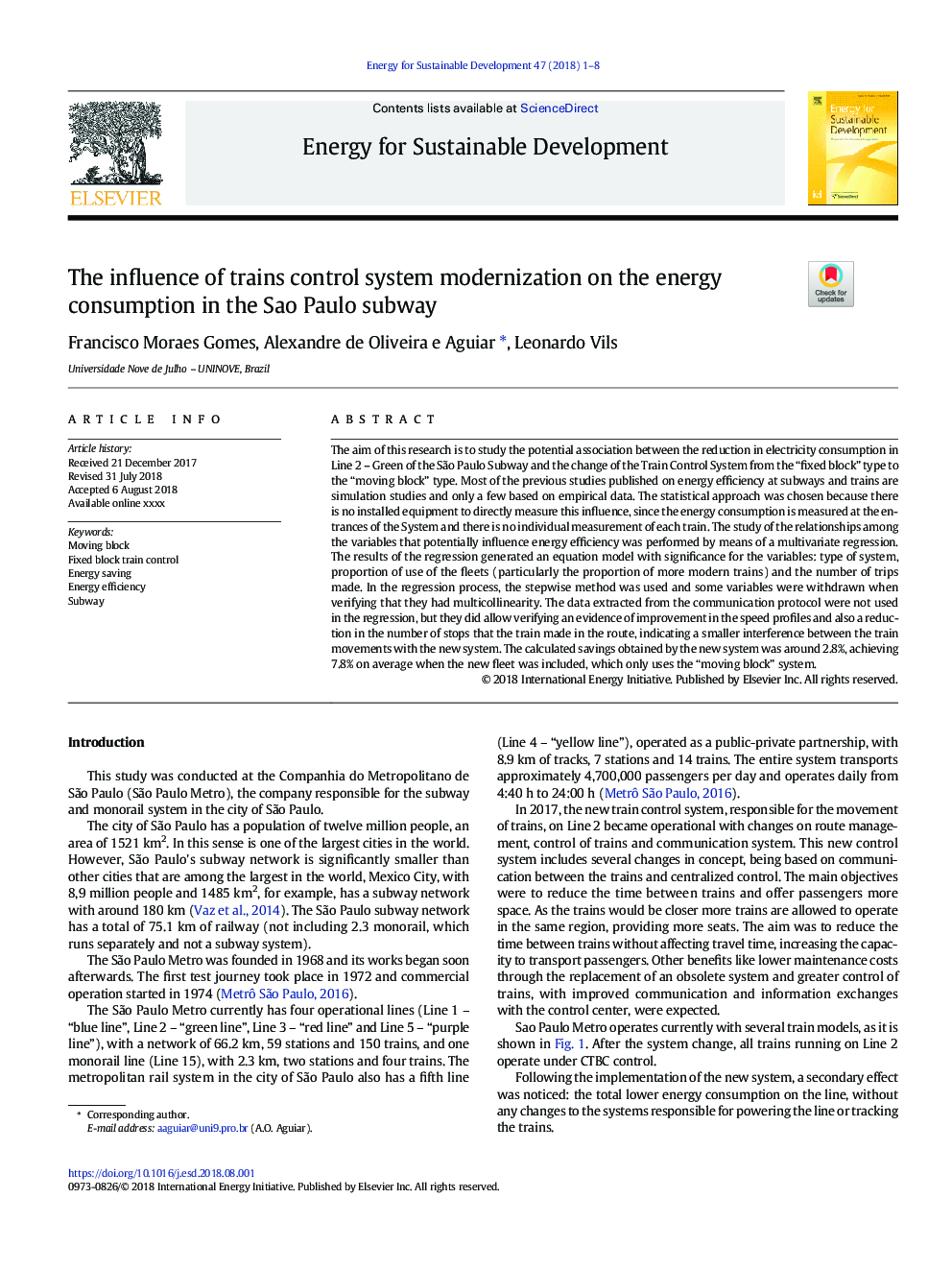| Article ID | Journal | Published Year | Pages | File Type |
|---|---|---|---|---|
| 8942538 | Energy for Sustainable Development | 2018 | 8 Pages |
Abstract
The aim of this research is to study the potential association between the reduction in electricity consumption in Line 2 - Green of the São Paulo Subway and the change of the Train Control System from the “fixed block” type to the “moving block” type. Most of the previous studies published on energy efficiency at subways and trains are simulation studies and only a few based on empirical data. The statistical approach was chosen because there is no installed equipment to directly measure this influence, since the energy consumption is measured at the entrances of the System and there is no individual measurement of each train. The study of the relationships among the variables that potentially influence energy efficiency was performed by means of a multivariate regression. The results of the regression generated an equation model with significance for the variables: type of system, proportion of use of the fleets (particularly the proportion of more modern trains) and the number of trips made. In the regression process, the stepwise method was used and some variables were withdrawn when verifying that they had multicollinearity. The data extracted from the communication protocol were not used in the regression, but they did allow verifying an evidence of improvement in the speed profiles and also a reduction in the number of stops that the train made in the route, indicating a smaller interference between the train movements with the new system. The calculated savings obtained by the new system was around 2.8%, achieving 7.8% on average when the new fleet was included, which only uses the “moving block” system.
Related Topics
Physical Sciences and Engineering
Energy
Energy (General)
Authors
Francisco Moraes Gomes, Alexandre de Oliveira e Aguiar, Leonardo Vils,
